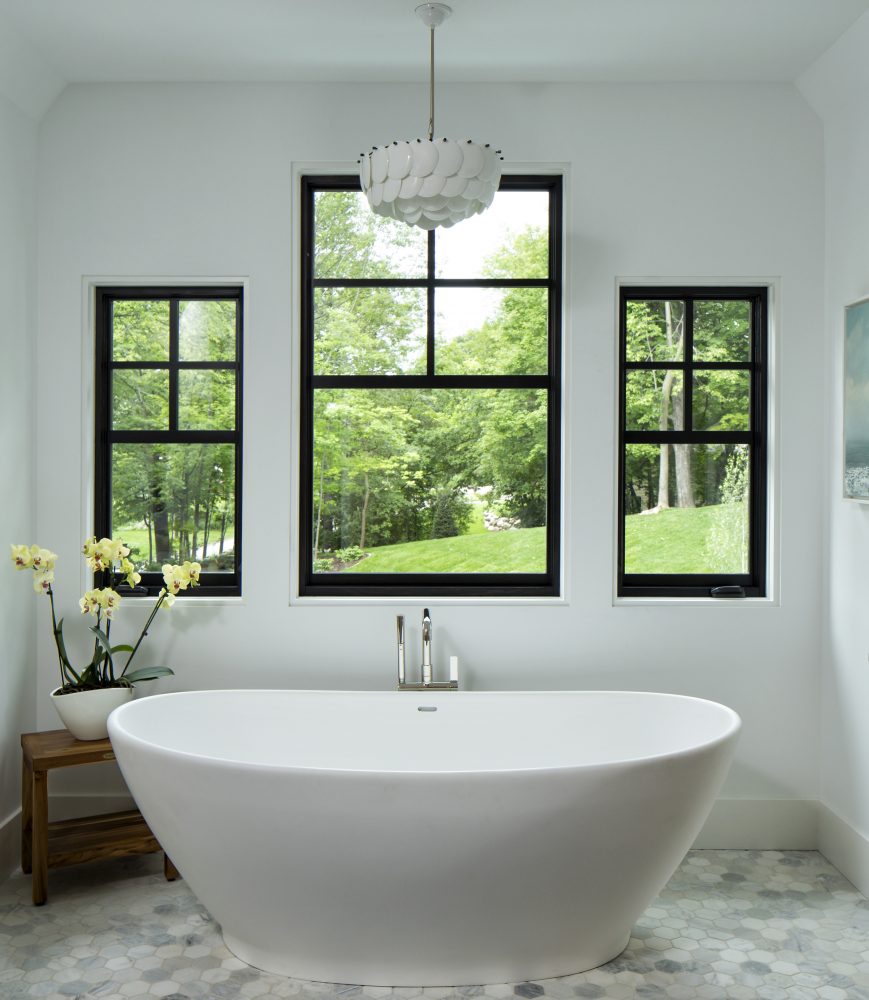Beyond Interior Furnishings
The transitional concept goes just beyond furniture and décor. It also marries traditional and contemporary architecture, finishes, and materials.
For example, a contemporary home might be expected to showcase large glass expanses to convey a sleek, light-infused interior. A transitional home can be just likely to include big glass. But it might welcome nature with oversized double-hung windows instead of large casement or picture windows.
Broad Appeal
One person who has observed the transitional movement up-close is Christine Marvin. Marvin, director of corporate strategy for Marvin, says the trend defies a generational bias. “It spans all age groups,” Marvin says. “A lot of homes I’m seeing might be someone’s second or their ‘forever’ home. One older couple I know loves Scandinavian design. But they also like wood and big glass with homey, rounded-corner furniture and traditional rugs. It’s what they like. It’s very simplistic, uncluttered, warm, and livable.”
The Beauty of Choice
Marvin says the buzz and floor traffic surrounding big glass displays at this year’s International Builders’ Show (IBS) is another example of a surging trend. “We had a contemporary studio collection at IBS,” Marvin observes. “These windows are specified for transitional design because traditional furniture and décor softens the look. You pick what resonates. That’s the beauty of transitional design.”
The good news for home builders is transitional styling checks all the boxes. The builder is free to recommend the best elements of contemporary and transitional home styling without sacrificing project aesthetics, value, and quality.
As Marvin says, “Home buyers find inspiration everywhere. It’s a different conversation today.”
For more information on the transitional home, visit our sources: Builder Online and Marvin Windows and Doors.


